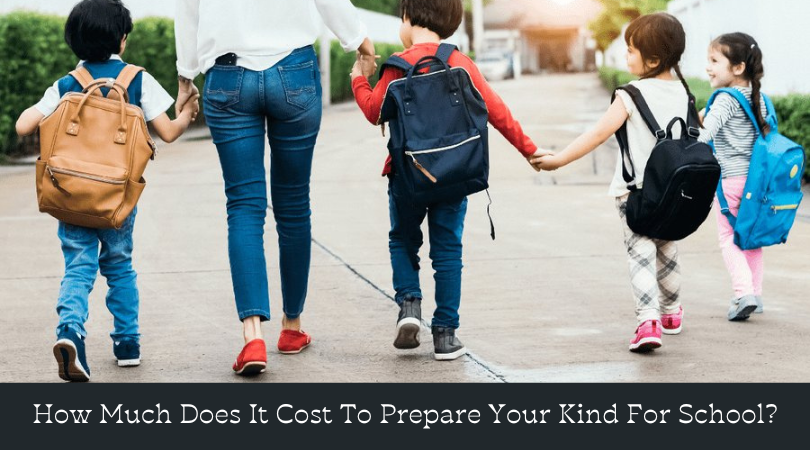 According to the US National Retail Federation, in order to prepare a child to school, parents have to spend $697 annually. This amount includes stationery, clothing, shoes, electronics, etc. In general, the “back to school” industry in America is estimated at $80 billion annually.
According to the US National Retail Federation, in order to prepare a child to school, parents have to spend $697 annually. This amount includes stationery, clothing, shoes, electronics, etc. In general, the “back to school” industry in America is estimated at $80 billion annually.
As you can see the average amount spent may be doubled if a family has several kids. That’s why many people may face the problem of money lack. Some of them have some savings but another have to address speedy-payday-loans.com/speedy-payday-loans-online-in-virginia-va.html. Why they do this? It is much easier to issue a payday loan as a cash advance. It is not required to collect a bunch of documents to get a financial assistance.
Keep mind that it is impossible to visit any school (free public) you desire in the USA. You can only go to a school that is tied to your place of residence. Besides, all schools in the USA have a rating: 1 to 10, where 10 is the highest rating. This rating is determined by the success of students, how they pass city tests, which universities they enter after graduation.
Based on these features, the following situation may happen: the school at the place of residence has a bad rating. Naturally, not all parents will want to send their child to such a school. Because of this, there is more demand for districts to which good schools are attached. And since the number of houses is the same as in other areas, their prices are higher.
As an example, in 2016, in Los Angeles, the average cost of a house in an area with not very good schools was $501,000. The cost of the same house, but in an area with high-rated schools, was $1,430,000. The difference is colossal ($929,000 or 185%). Not everyone can afford a house for one and a half million dollars. Such a gap in the cost of houses is also relevant for rental housing. In this case, the difference between different districts may differ by $1,000-$1,500.
Alternatively, you can live in an area with not very good public schools and send your child to a private school. And even in this situation, the cost may be cheaper than the cost of renting (buying) housing in an area with a good public school.
For example, the area with good schools is Beverly Hills. There are very expensive houses there, not everyone can afford to live there, and the number of houses is also limited. There is also an area with very good schools called Calabasas. The problem with this area is that it takes an hour and a half to go to it in one direction. And in this area, things are very tight with work, the number of jobs can be counted on the fingers.
It turns out that it is very good to live there with a family, there is practically no crime, it is very safe, always clean, beautiful, excellent schools, but there is no work. And in the USA, as we know, everything is very expensive and it is very important to have a good job. Parents have to balance between a good job and hiring a babysitter. Hiring a babysitter is also an expensive pleasure. The question arises: either to work and pay for a babysitter, or to work as a babysitter yourself. You also need to get to work for an hour and a half in one direction (2-3 hours a day). Therefore, parents always face a difficult choice.
The following fact that needs to be taken into account: in the USA there are three types of school (primary, secondary and higher). All these three types of schools do not overlap. It may turn out that in the area in which you live, there may be a good elementary school, and the secondary school, on the contrary, is bad. Therefore, we will have to move, and then it turns out that the higher school is so-so. And you’ll have to move again. Therefore, these are constant decisions and the search for balance — what to save: time, money, children’s education, their own comfort.
Therefore, when specifying the amount of about $700 (the annual amount for school fees), it is necessary to take into account the indirect costs listed above.
And the pitfalls do not end there: the rating of schools is constantly changing. It may turn out that the parents moved to an area with very good schools, with high ratings, and paid an impressive amount for a house. And by the time the child goes to secondary school, it may turn out that the rating of 10 points has decreased by 2. And what to do about it remains a mystery.
In order to end on a positive note, we want to say that the costs associated with backpacks, stationery, etc., are not very high. You are able to spend within $50-$100. Also, these expenses can be covered by various charitable organizations without any certificates and statements. People can simply contact the organization and get a backpack with all the necessary accessories for free in order to send their child to school.
So, for example, there are private organizations that collect backpacks. Employees bought a backpack, and the company filled it with everything necessary (pens, notebooks, stationery). You can also write a nice message to the child who gets this backpack.
Anyway, every family will find the way out.